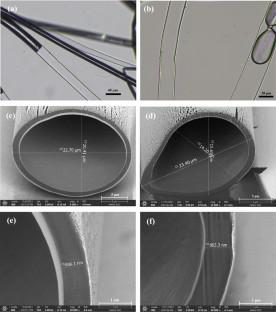Cellulose ( IF 4.9 ) Pub Date : 2022-12-01 , DOI: 10.1007/s10570-022-04965-0
Zhuli Yang , Fengmiao Li , Fuwang Guan , Fumei Wang , Cheng Wang , Yiping Qiu

|
To make full use of Chinese domestic kapok fiber, the microstructure and composition structure of kapok collected in Quanzhou, China, were investigated and compared with the popular Indonesia ceiba. FIB-SEM images showed the similar fine tube structures of both kapok fibers with the wall thickness and hollow ratios of 806.1 nm, 85.56% and 863.3 nm, 82.40% respectively. Mesopores with the average width of 48.247 and 38.758 Å were proved to be slit pores produced by the packing of porous lamellae. Quanzhou kapok was superior to Indonesia ceiba in terms of wall thickness, hollow ratio, specific surface area and pore size which would be better at oil adsorption. Both kapok fibers were primarily composed of cellulose, hemicellulose and lignin. Quanzhou kapok had better thermostability and higher degradation speed than those of Indonesia ceiba. Inside the fiber, cellulose skeletons were in the arrangement of helical ribbon, while amorphous lignin and hemicellulose made up the fibrillar interval and cemented the fiber together. The interstice between the different compositions should be the mesopores. In this paper, the experimental results were discussed and analyzed in detail aiming at microstructure and composition distribution of kapok fiber, providing reference values for the applications and product development process of Chinese domestic kapok fiber.

































 京公网安备 11010802027423号
京公网安备 11010802027423号